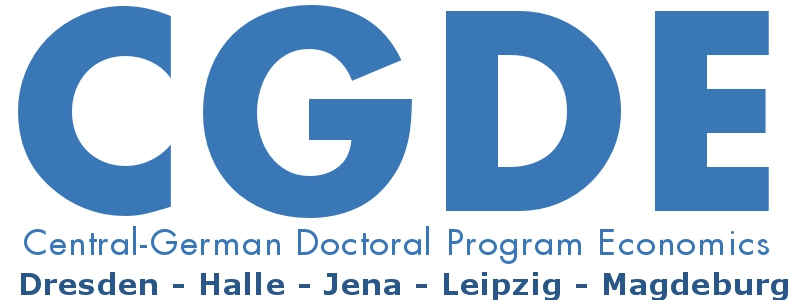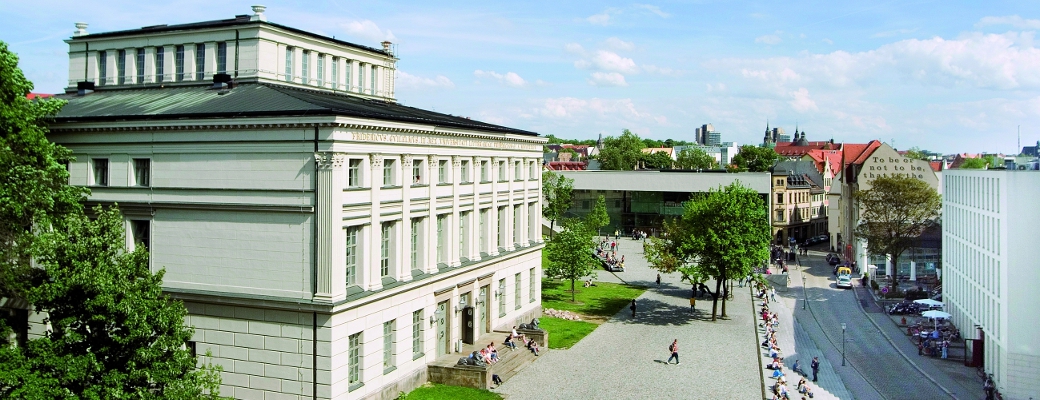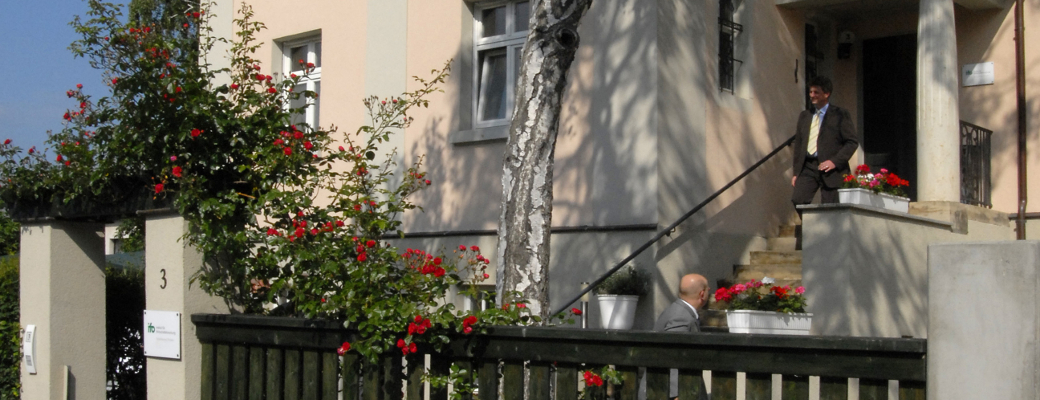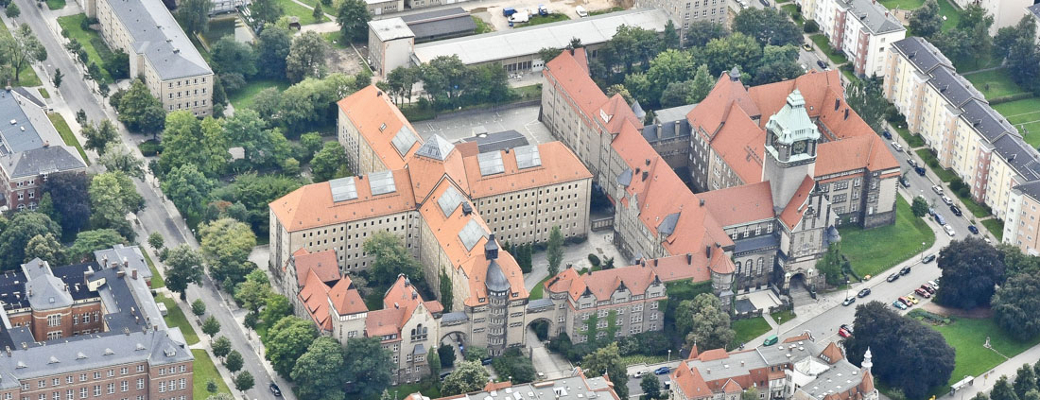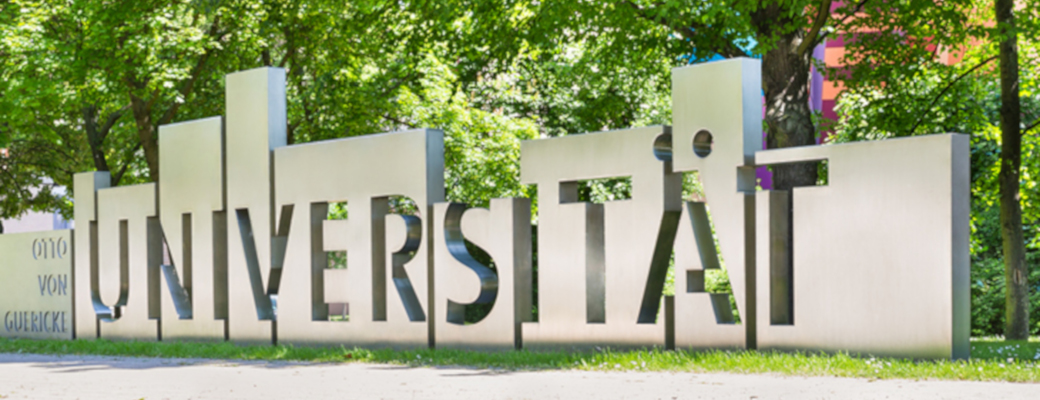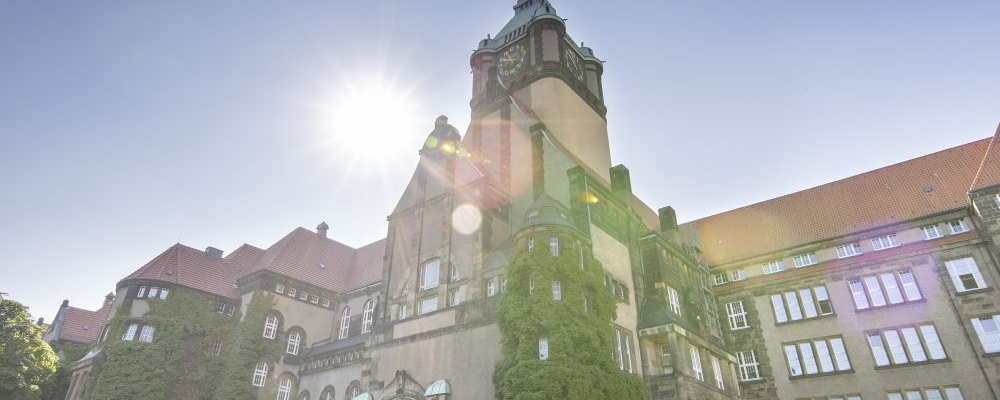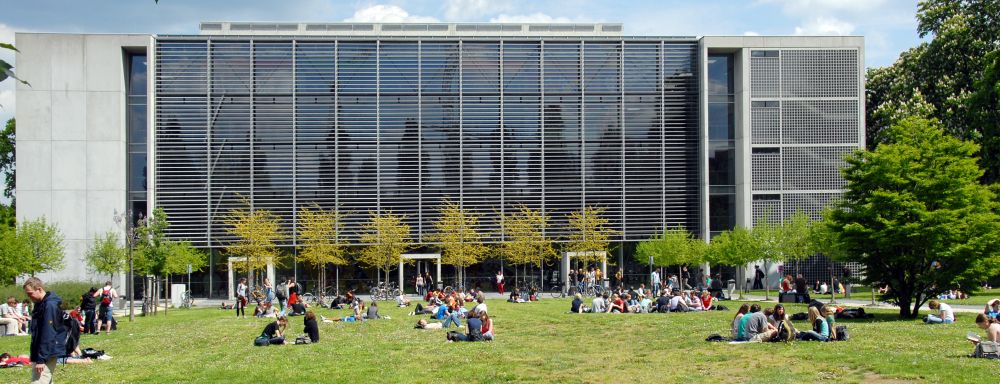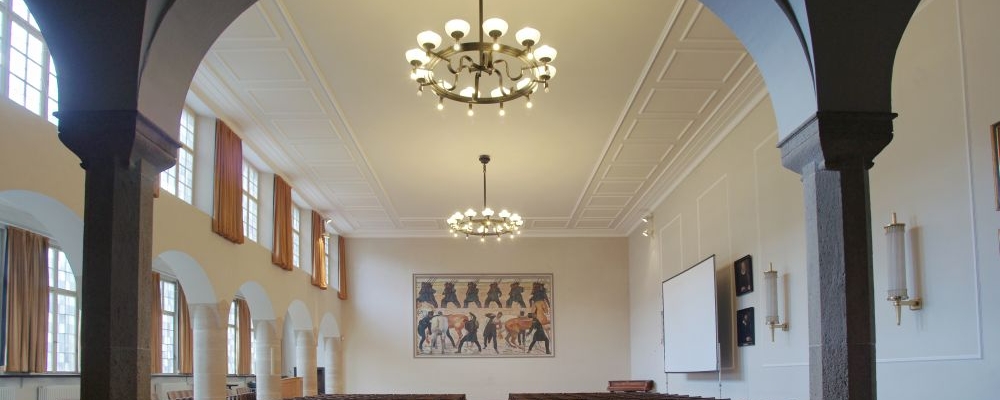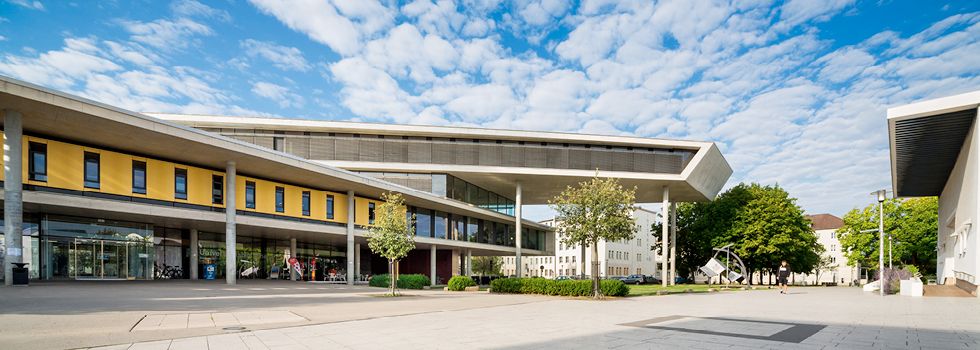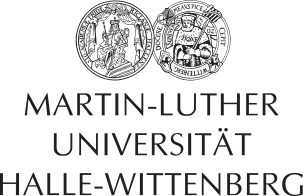Introduction to Graduate Labor Economics, with an Emphasis on Life-Cycle Dynamics
Lecturer: Professor Florian Hoffmann, PhD (University of British Columbia, Vancouver School of Economics and IWH Halle)
Date: August 6-9, 2018
Venue: Halle Institute for Economic Research (IWH) – Member of the Leibniz Association, Kleine Maerkerstrasse 8, 06108 Halle (Saale), Germany, conference room (ground floor)
Registration: until July 1, 2018 via email: annett.hartung@iwh-halle.de. The course is designed for at most 25 participants.
Announcement: pdf
Course Description
This workshop is designed as a first course in PhD-level Labor Economics. The overall goal is to give a fairly broad overview of topics in labor economics and the different empirical methodologies used therein. This should provide students the tools to read up on literatures that we will not cover, such as the economics of immigration. We will cover modern empirical methods in program evaluation, such as Regression Discontinuity and Field Experiments, but also more technical methodologies related to the structural estimation of dynamic models. Some background in Dynamic Programming is helpful but not necessary. There will be a practice session each day which will be used for implementing some of the methods empirically, using real-world data provided by me. As a consequence, you’ll need to bring a laptop. Preferred software is Stata. Knowledge in Matlab is useful but not necessary.
Schedule
The schedule for each day is as follows:
09:00–10:30 Lecture
10:30–11:00 Coffee Break
11:00–12:30 Lecture
12:30–14:00 Lunch Break
14:00–16:00 Lecture
16:00–16:30 Coffee Break
16:30–18:00 Practice Session
Exam
The exam has two parts. First, there will be a problem set every day. Second, participants are required to write a referee report on an assigned paper after the course.
Syllabus
The course is paper based. We will cover approximately one paper per topic in class, but all papers on the reading list are relevant.
Review Papers
For comprehensive surveys of a specific field of research, sometimes quite narrowly defined, the „Handbooks“ are always a good source. Obviously, for this course the Handbook of Labor Economics is the most relevant one. Some surveys should be read by any empirical researcher. Here is a small list:
Angrist, J. and A. Krueger (1999). „Empirical strategies in labor economics,“ Handbook of Labor Economics.
Angrist, J. and A. Krueger (2001). „Instrumental Variables and the Search for Identification: From Supply and Demand to Natural Experiments,“ Journal of Economic Perspectives, Vol. 15(4), pp. 69-85.
Lee, D. and T. Lemieux, (2010). „Regression Discontinuity Designs in Economics,“ Journal of Economic Literature, Vol. 48(2), pp. 281-355.
1. Neoclassical Models
a) Labor Supply: Static
Eissa, N. and J. Liebman (1996): „Labor Supply Responses to the Earned Income Tax Credit.“ Quarterly Journal of Economics, pp. 605 – 637.
Kostol, A. and M. Mogstad (2014): „How Financial Incentives Induce Disability Insurance Recipients to Return to Work.“ American Economic Review, pp. 624-55.
b) Labor Supply: Dynamic
MaCurdy, T. (1981): „An Empirical Model of Labor Supply in a Life-Cycle Setting.“ Journal of Political Economy, 1059-1085.
Fehr, E. and L. Goette (2007): „Do Workers Work More if Wages are High? Evidence from a Randomized Field Experiment.“ American Economic Review, pp. 298-317.
c) Labor Supply: Discrete Choices and the Roy Model
Oettinger, G. (1999): „An Empirical Analysis of the Daily Labor Supply of Stadium Vendors.“ Journal of Political Economy, pp. 360-392.
Caines, D., F. Hoffmann and G. Kambourov (2017): „Complex Occupations and Labor Market Polarization: An Empirical Investigation,“ Review of Economic Dynamics, 25, pp. 298-319.
d) Labor Demand: Static (Application: Minimum Wages)
Card, D. and A. Krueger (1994): „Minimum Wages and Employment: A Case Study of the Fast-Food Industry in New Jersey and Pennsylvania.“ American Economic Review, pp. 772-793.
Neumark, D. and W. Wascher (2000): „Minimum Wages and Employment: A Case Study of the Fast-Food Industry in New Jersey and Pennsylvania: “ American Economic Review, pp. 1362-96.
Card, D. and A. Krueger (2000): „Minimum Wages and Employment: A Case Study of the Fast-Food Industry in New Jersey and Pennsylvania: Reply“ American Economic Review, pp. 1397-1420.
Jardim, E., Long, R. Plotnick, E. van Inwegen, J. Vigdor, and H. Wething (2018): “Minimum Wage Increases, Wages, and Low-Wage Employment: Evidence from Seattle” NBER working paper No. 23532.
e) Labor Demand: Dynamics and Adjustment
Hunt, J. (1999): „Has Work-Sharing Worked in Germany?“ Quarterly Journal of Economics, pp. 117-148.
Crepon, B. and F. Kramarz (2002): „Employed 40 Hours or Not Employed 39: Lessons from the 1982 Mandatory Reduction of the Workweek.“ Journal of Political Economy, pp. 1355-1389.
Beaudry, P., D. Green and B. Sand (2018): “In Search of Labor Demand.” Forthcoming in the American Economic Review.
f) Labor Market Equilibrium
Card, D. and T. Lemieux (2001): „Can Falling Supply Explain the Rising Return to College for Younger Men? A Cohort-Based Analysis.“ Quarterly Journal of Economics, pp. 705 – 746.
Diamond, R. (2016): „The Determinants and Welfare Implications of US Workers‘ Diverging Location Choices by Skill: 1980-2000.“ American Economic Review, pp. 479-524.
2) Human Capital Theory
a) Two Models of Human Capital Accumulation: Ben-Porath vs. Becker
Acemoglu-Autor Lecture Notes
Polachek, S. W., T. Das and R. Thamma-Apiroam (2015): „Micro- and Macroeconomic Implications of Heterogeneity in the Production of Human Capital.“ Journal of Political Economy, Vol. 123(6), pp. 1410-1455.
Huggett, M., G. Ventura and A. Yaron (2011): „Sources of Lifetime Inequality,“ American Economic Review, 101(7), pp. 2923-2954.
b) The Returns to Education: Quasi-Experimental Evidence
Card, D. (2001): „Estimating the Returns to Schooling: Progress on Some Persistent Econometric Problems,“ Econometrica, Vol. 69(5), pp. 1127-1160.
Carneiro, P., J. Heckman and E. Vytlacil (2011): „Estimating Marginal Returns to Education,“ American Economic Review, Vol. 101(6).
Oreopoulos, P., R. S. Brown and A. M. Lavecchia (2016): „Pathways to Education: An Integrated Approach to Helping At-Risk High School Students,“ Journal of Political Economy, forthcoming.
Kirkeboen, L., E. Leuven and M. Mogstad (2016): “Field of Study, Earnings, and Self-Selection”, Quarterly Journal of Economics, pp. 1057-1111.
3) Unemployment
a) Basic Framework and Some Econometrics
Rogerson, R, R. Shimer, and R. Wright (2005): „Search-Theoretic Models of the Labor Market: A Survey.“ Journal of Economic Literature, pp. 959-988.
Eckstein, Z. and G. van den Berg (2007): „Empirical labor search: A survey,“ Journal of Econometrics, Vol. 136(2), 531-564.
b) Equilibrium Unemployment: Empirical Findings
Bender, S., J. Schmieder, and T. von Wachter (2012). „The Effects of Extended Unemployment Insurance Over the Business Cycle: Regression Discontinuity Estimates Estimates over 20 years.“ Quarterly Journal of Economics, pp. 701-752.
Kroft, K., F. Lange and M. Notowidigdo (2013): „Duration Dependence and Labor Market Conditions: Evidence from a Field Experiment,“ Quarterly Journal of Economics, Vol. 128(3), pp. 1123-1167.
Johnston, A. and A. Mas (2018): “Potential Unemployment Insurance Duration and Labor Supply: The Individual and Market-Level Response to a Benefit Cut.” forthcoming, Journal of Political Economy.
Chodorow-Reich, G., J. Coglianese, and L. Karabarbounis (2018): “The Limited Macroeconomic Effects of Unemployment Benefit Extensions.” Mimeo, Harvard University.
Hagedorn, M., I. Manovskii and K. Mitman (2017): “The Impact of Unemployment Benefit Extensions on Employment: The 2014 Employment Miracle?” mimeo, University of Pennsylvania.
